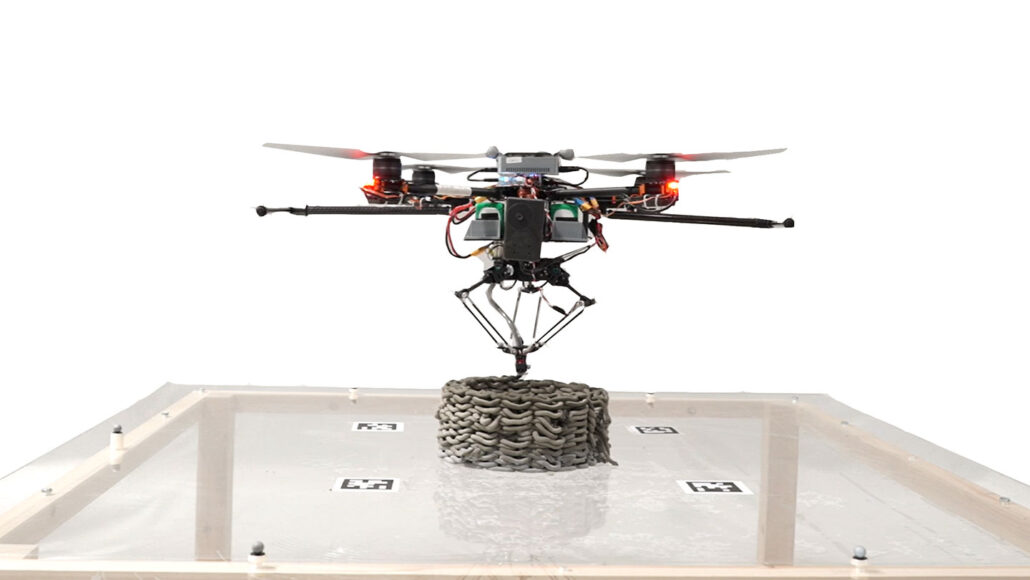Questions for ‘Insect-inspired drones work together to 3-D print structures’

Two identical drones worked together to build a cake-sized cylinder. When one drone went to reload, the other hovered over the structure, squirting out ribbons of a cement-like material.
Imperial College London, University College London, University of Bath